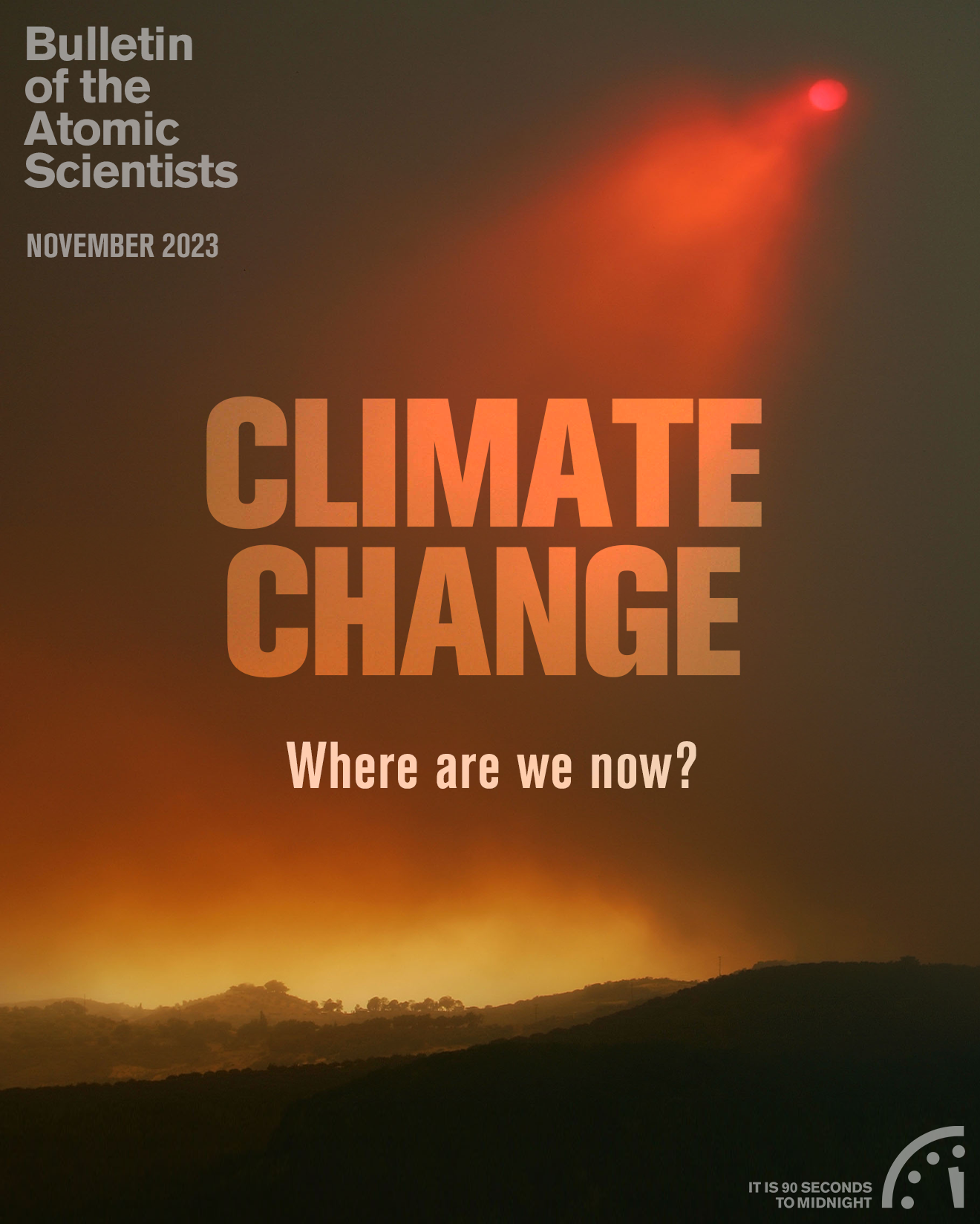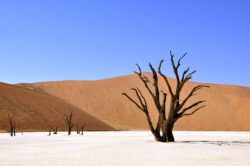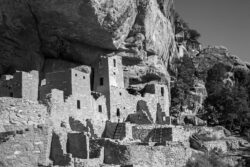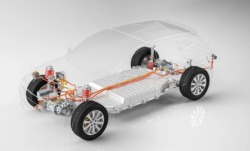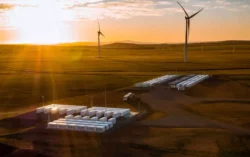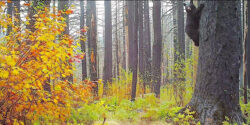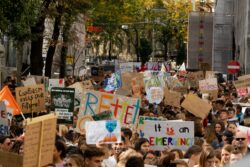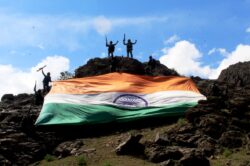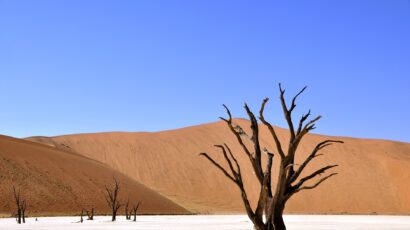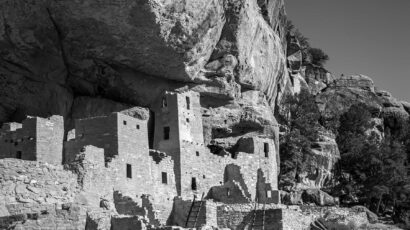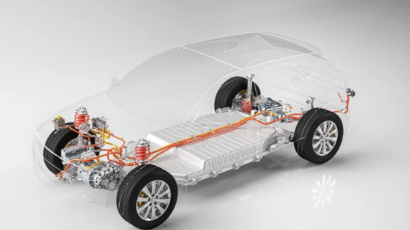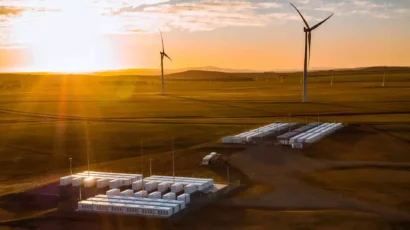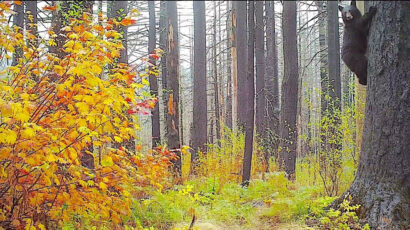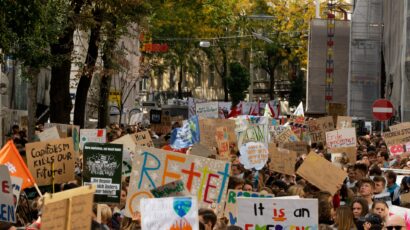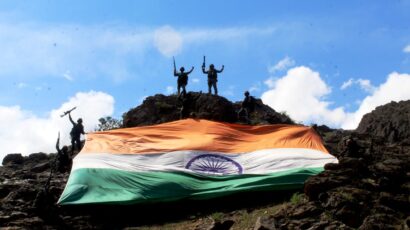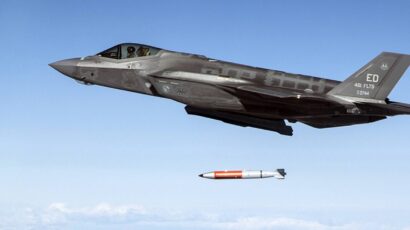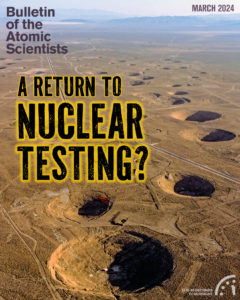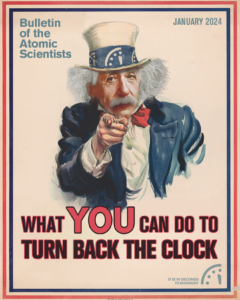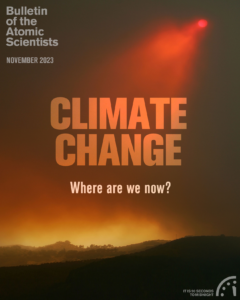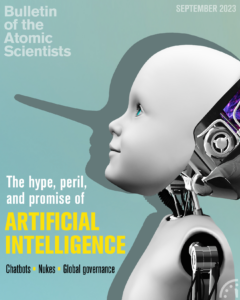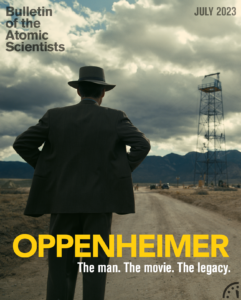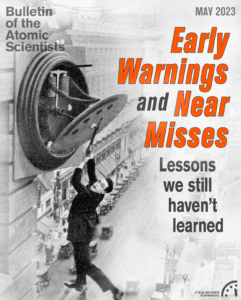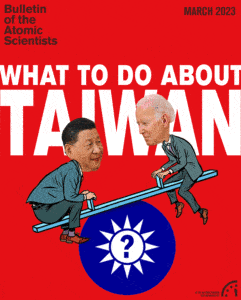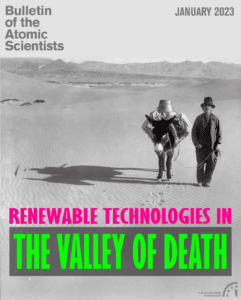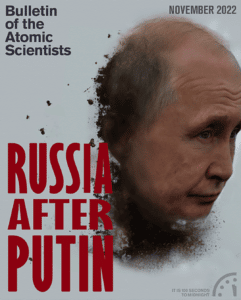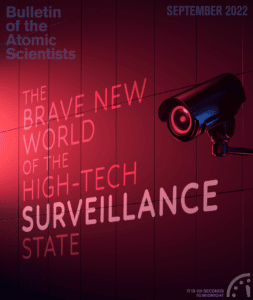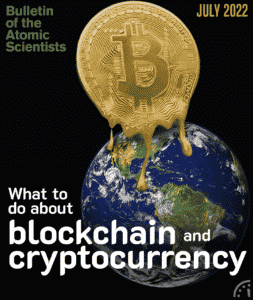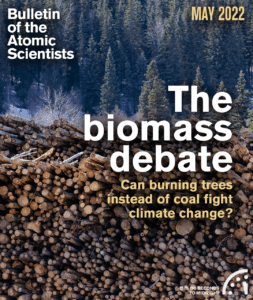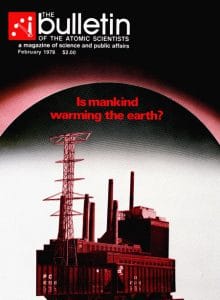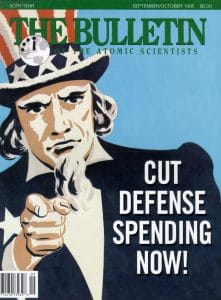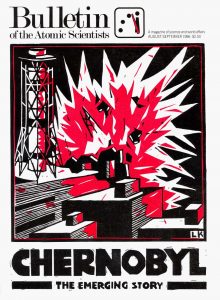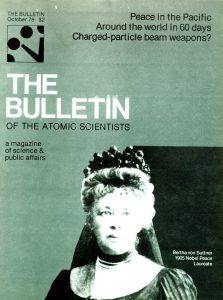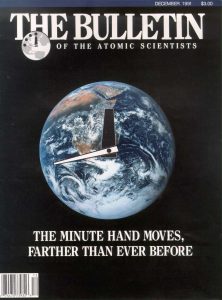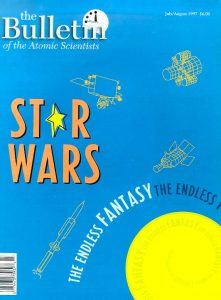DIGITAL MAGAZINE
November 2023
DIGITAL MAGAZINE
November 2023
Photo of 2008 Gap fire by David McNew/Getty Images
Cover design by Thomas Gaulkin
Introduction: Climate change—Where are we now?
“Like writing the biography of a ghost”—Interview with Jeff Goodell, author of The Heat Will Kill You First
Book excerpt—Catastrophic climate change: Lessons from the dinosaurs
Where climate journalism is now: Interview with Emily Atkin, the fire behind the Heated climate newsletter
Charging ahead: Steven Chu, Nobel Prize-winner and former Energy Secretary, on today’s battery research—and more
Laying the groundwork for long-duration energy storage
Redefining the wildfire problem and scaling solutions to meet the challenge
Climate anxiety is not a mental health problem. But we should still treat it as one.
Conditional restraint: Why the India-Pakistan Kargil War is not a case of nuclear deterrence
Nuclear weapons sharing, 2023
“Like writing the biography of a ghost”—Interview with Jeff Goodell, author of The Heat Will Kill You First
Book excerpt—Catastrophic climate change: Lessons from the dinosaurs
Where climate journalism is now: Interview with Emily Atkin, the fire behind the Heated climate newsletter
Charging ahead: Steven Chu, Nobel Prize-winner and former Energy Secretary, on today’s battery research—and more
Laying the groundwork for long-duration energy storage
Redefining the wildfire problem and scaling solutions to meet the challenge
Climate anxiety is not a mental health problem. But we should still treat it as one.
Conditional restraint: Why the India-Pakistan Kargil War is not a case of nuclear deterrence
Nuclear weapons sharing, 2023
Photo of 2008 Gap fire by David McNew/Getty Images
Cover design by Thomas Gaulkin
Subscribe now
We've relaunched the Bulletin's award-winning digital magazine. Get premium access for less than $5 a month.
Magazine archive
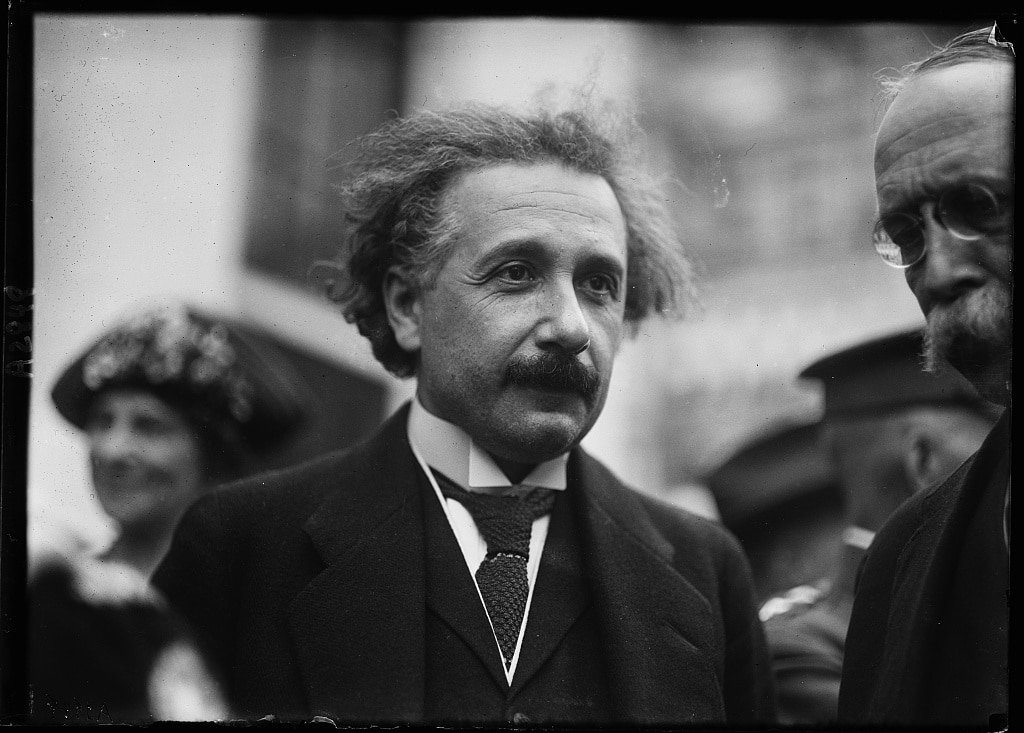
Premium subscribers can read the complete Bulletin of the Atomic Scientists’ archive, which contains every article published since our founding in 1945.
This archive was created in honor of John A. Simpson, one of the Bulletin’s principal founders and a longtime member of its Board of Sponsors. This searchable archive provides exclusive online access to original interviews and commentary by luminaries like Albert Einstein, J. Robert Oppenheimer, Ruth Adams, John F. Kennedy, Stephen Hawking, Christine Todd Whitman, US Secretary of Defense William J. Perry, and multiple Nobel laureates.
